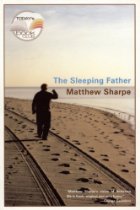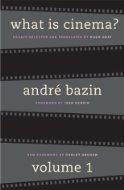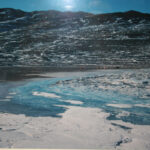Happy Holidays to All! The library will be closed from 12/24-12/27 for the Christmas holiday and state employee furlough day. We will reopen on Tuesday, 12/28. We will also close for the New Year’s holiday on Friday, 12/31. The library is open reduced hours during the January intersession. Check the library calendar for hours of operation.
Please join us for the Elihu Burritt Birthday Party!
The Burritt Bicentennial event will take place in Special Collections at the library at 2 p.m. on Wednesday, December 8, 2010.
Sherrod Emerson Skinner III, the great-great-great grand nephew of Elihu Burritt will deliver keynote remarks.
December 8, 2010 marks the 200th anniversary of the birth of Elihu Burritt, New Britain’s most famous citizen. Burritt is known as “The Learned Blacksmith”, who from humble beginnings as a blacksmith’s apprentice, went on to become an internationally recognized 19th century pioneer peace activist, abolitionist, self taught linguist, writer and lecturer. The Elihu Burritt Bicentennial celebration is an excellent occasion to honor the memory of this great man and to revive our community’s pride in this interesting personality.
Materials from the Elihu Burritt Collection will be on display through the month of December.
Birthday cake and Burritt birch soda will be served.
Check out the new Burritt Library Newsletter!
The Burritt Library Newsletter 2010 fall edition features articles on the new Library Director, Burritt Bicentennial, Google Scholar, tips for citing sources, & more!
Go to http://library.ccsu.edu/newsletter/
Check it out!
Thanksgiving Holiday Hours
Please note that the library will be closing at 4:45 p.m. on Wednesday, November 24th for the Thanksgiving holiday. We will reopen on Monday, November 29th. To see a full listing of hours visit the Calendar.
Have a great Thanksgiving!
Library Awards Clarification
Please note that there are TWO different award contests sponsored by Burritt Library:
Elihu Burritt Library Undergraduate Research Awards
For papers and projects completed for classes in 2010. (A separate award from URCAD).
http://library.ccsu.edu/services/award/application.php
Deadline February 22, 2011
and
Elihu Burritt Bicentennial Writing/Creative Competition
This award will recognize excellence in research and/or creativity related to Elihu Burritt and his lifelong interest in many important topics, including abolitionism, international peace, linguistics, and ocean penny postage. Applicants are invited to submit essays, papers, short stories, plays, historical fiction, poems, descriptive prose, video documentaries, etc. for consideration.
http://library.ccsu.edu/services/award/burritt_award.php
Deadline: November 30, 2010
If students are interested please ensure the correct application is filled out and everything that is required is submitted.
If you have any questions or problems, please contact Susan Slaga at slagas@ccsu.edu or 860-832-2095.
Burritt Bicentennial Competition Deadline extended until 11/30/10
The deadline for Burritt Bicentennial competition has been extended until November 30, 2010. For more information and an application go to: http://library.ccsu.edu/services/award/burritt_award.php
All students are strongly encouraged to apply. Applicants are invited to submit essays, papers, short stories, plays, historical fiction, poems, descriptive prose, video documentaries, etc. Two prizes of $200 will be awarded.
Burritt Celebration Continues Nov. 16
Come join us for a lecture on Elihu Burritt’s role in the anti-slavery movement by Prof. Robert Wolff. The event will be held in the Special Collections Reading Room at noon on 11/16. Dr. Gilbert Gigliotti will read from Taylor Graham’s book, Walking with Elihu: poems on Elihu Burritt, The Learned Blacksmith, following the lecture.
We also invite you to view material from the Elihu Burritt Collection that will be on display in the library throughout the month of November!
Faculty Recognition Exhibit
From now until November 5th check out the Faculty Recognition Exhibit on the 2nd Floor of the library. The exhibit consists of titles that were selected by faculty members who were recently received a promotion or granted tenure in 2010.
These faculty were invited to select a book from the collection or a book to be purchased in their honor. A book-plate is placed in the book noting their achievement and the faculty member also provides a statement about why they chose that particular book.



Try out iPOLL!
iPOLL is a great resource to try out if you are looking for current public opinion polls on a national level.
Whether you are curious about the behaviors of the American public or have questions about the latest political polls, iPOLL can help you locate this information! The information provided by the Roper Center for Public Opinion takes the results and questions from over 150 surveying organizations over the last 70 years, and makes them searchable.
iPoll is available from the library website: http://library.ccsu.edu/find/finddb.php?searchtitle=iPoll
Antarctic Adventures Exhibit
Antarctic Adventures – an exhibit of photographs by Michael Wizevich, from Physics and Earth Sciences Department, will be on display at the Elihu Burritt library during the month of October 2010.
On Monday October 18, noon, Prof. Wizevich will talk about his two expeditions to Antarctica. The talk will take place in Special Collections, at the Burritt library. Campus community is cordially invited.
During the 1993-94 and 1995-96 austral summers I was part of two Antarctic expeditions, the first one with the New Zealand Antarctic Program, and the second one with the United States Antarctic Program. Both projects were in the Transantarctic Mountains and Dry Valley region of Central Victoria Land of the Ross, a sector of Antarctic that is directly south of New Zealand.
About ninety eight percent of Antarctica is covered by ice, but the rugged peaks of the Transantarctic Mountains form a long, exposed spine across the continent. The mountains are covered with a thick mantle of snow and ice flowing from the central cap of continental ice, the Polar Plateau. Most of the major valleys in the Transantarctic Mountains are filled with ice streams, except for ice-free “oases” such as the McMurdo Dry Valley region. All the Dry Valley floors are bare rocky ground, and some valleys contain rare lakes and rivers. The ground is not snow covered because the air is so dry it evaporates more snow than falls.
Our studies required remote camps. Helicopters, the primary transportation for projects located within 100 miles of the bases, brought us to our sites. Our camps consisted of Scott tents for sleeping quarters – essentially the same as those used by Captain Robert Scott and others in the early part of century – and a weather report tent for work and dining during the drilling expedition.
First Expedition (1993-1994): Ancient Antarctic Environments This expedition studied Devonian age (>400 million yrs. ago) sedimentary rocks at Table Mountain, located at 2170 m (7100 ft) in the Transantarctic Mountains. Table Mountain is surrounded fabulous views of glaciers (Ferrar, Taylor & Emmanuel) and distant peaks (including Mt. Feather). Cliff faces in the region contain contrasting rock types; light-colored sedimentary rocks were intruded by dark Ferrar Dolerite, an igneous rock which originated as liquid magma and filled in the gigantic cracks that formed during the break-up (rifting) of the supercontinent Gondwana, about 200 million years ago. Ferrar Dolerite and nearby Ferrar Glacier are named after Hartley Ferrar, the geologist on Scott’s Discovery Expedition (1901-04).
Second Expedition (1995-1996): Climate Change in Antarctica
This expedition studied recent (50,000 to 2 million years old) permafrost sediments in two sites within the McMurdo Dry Valleys — Taylor Valley and Miers Valley, and glacial till (20 million?) on Mt. Feather. Because we wanted to keep the core frozen we went early in Antarctic field season, when temperatures near sea level remained below 0° F. The Mt. Feather location was at nearly 2600 m (8500 ft) elevation. It was very cold and windy, but the location afforded spectacular views of Beacon Valley and surrounding area.
 The sediments were extracted by a gasoline-powered drill rig, developed and operated by Russian scientists. Later lab studies of the material in the U.S. and Russia analyzed core material for microorganisms. The objective was to use the microbes in the permafrost layers to reconstruct paleoclimatic history of the area during the last few million years. Ancient microbes are indicators of past climate in Antarctica because certain microbes thrive under “warm” conditions and others during “cold”. Since sediment is more-or-less continually being deposited and permanently frozen, we would be able to see a continuous record of past climate (in theory).
The sediments were extracted by a gasoline-powered drill rig, developed and operated by Russian scientists. Later lab studies of the material in the U.S. and Russia analyzed core material for microorganisms. The objective was to use the microbes in the permafrost layers to reconstruct paleoclimatic history of the area during the last few million years. Ancient microbes are indicators of past climate in Antarctica because certain microbes thrive under “warm” conditions and others during “cold”. Since sediment is more-or-less continually being deposited and permanently frozen, we would be able to see a continuous record of past climate (in theory).
Drilling was slow because drilling fluids were not used in order to prevent contamination of modern microbes in the cores. Keeping the cores frozen and sterile required using a custom-made freezer box in the field and in transport back to the U.S. The cores are now stored (still frozen) in the Antarctic Core Storage Facility in Tallahassee, Florida.